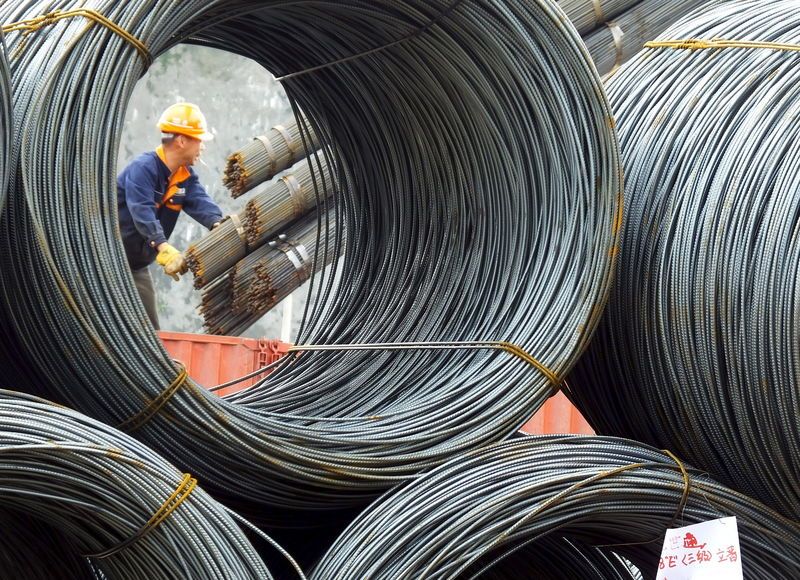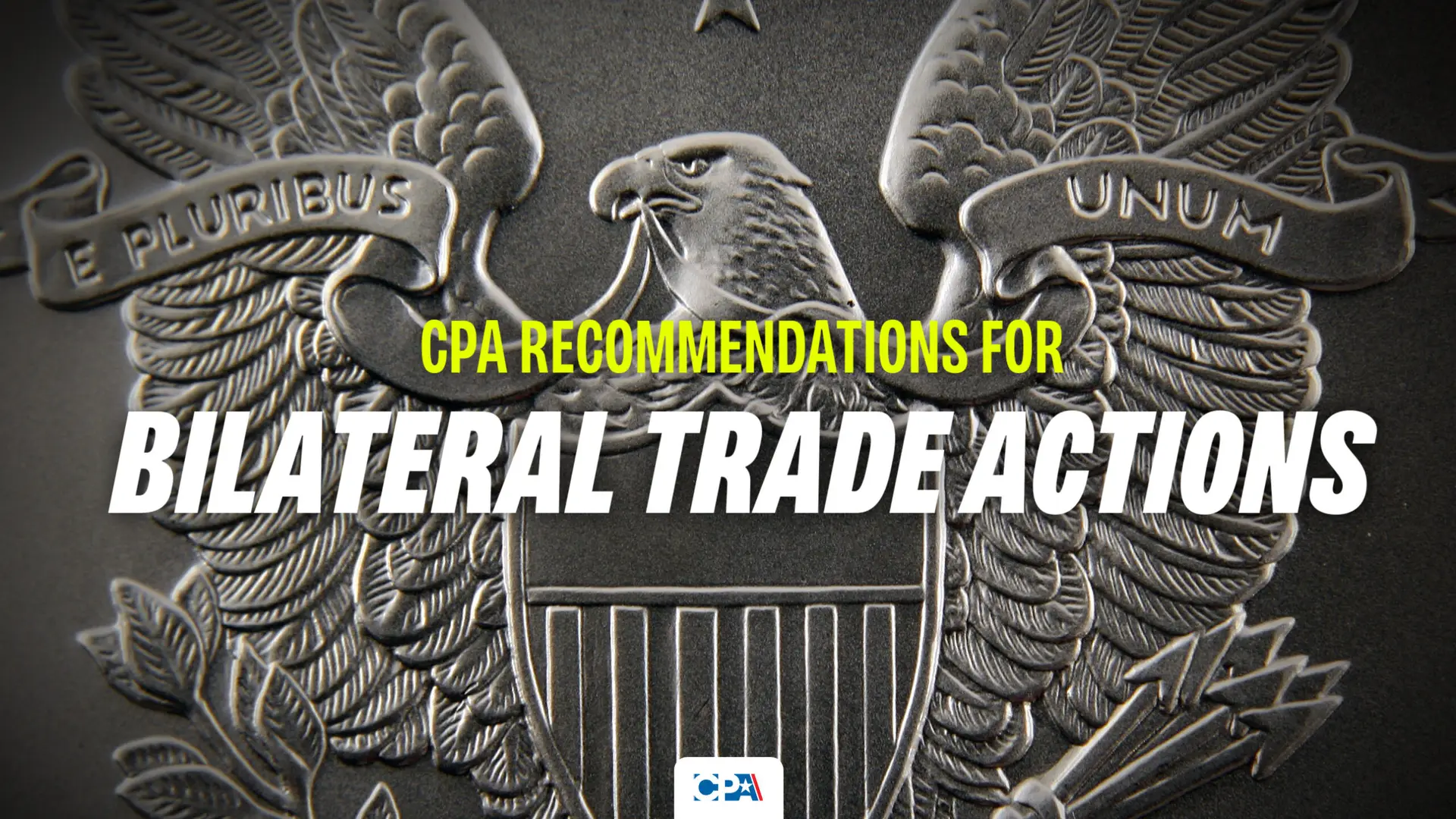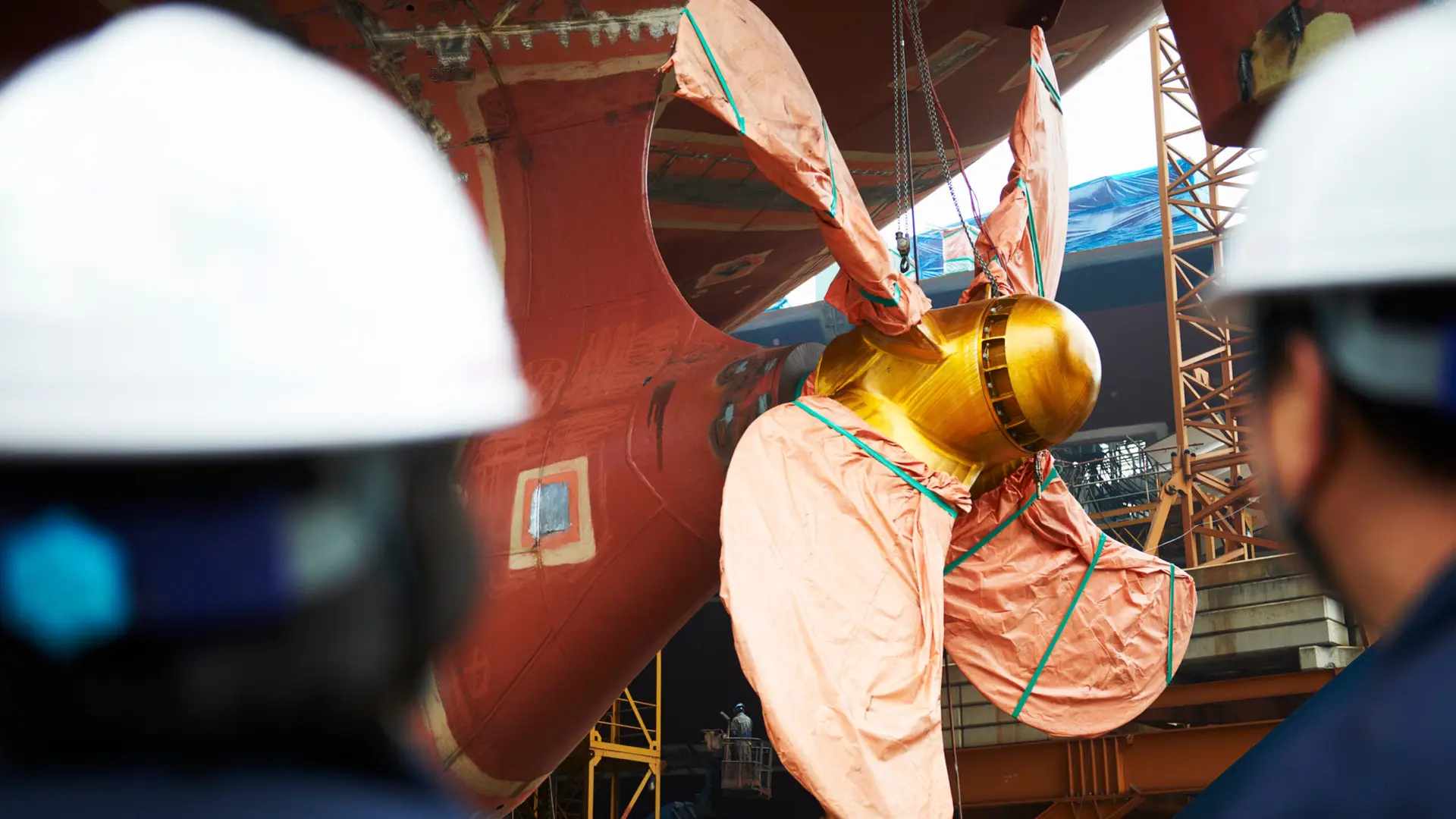This article is an expanded version of testimony delivered by Mr. Ferry to the U.S. International Trade Commission on July 22, 2022.
- The Section 232 steel tariffs have benefited the U.S. steel industry and its workforce
- American steelworkers earned an average of $117,200 last year, making steel one of the best-paying industrial sectors in the U.S.
- Steel imports are down from the high levels of 2017.
- Investment in new steel mills is bringing prosperity to regions in the Midwest, Southeast, and Southwest.
- Contrary to media stories, steel prices did not rise after the tariffs, but fell in 2019. They have risen in the past 12 months due to supply chain snafus and shortages.
In 2018, Donald Trump levied Section 232 tariffs of 25% on global steel imports. The tariffs sparked a positive mentality among the major steel companies, who saw expansion opportunities in the U.S. market and planned billions of dollars of investment to exploit those opportunities. Many of those investments have now come onstream, generating jobs and prosperity in many regions of the U.S.
Before we dive into the details, it is important to understand the context. China’s steel industry today accounts for about 53% of global steel production. China’s steel production last year was 1.03 billion metric tons. Beginning in the mid-1990s, the Chinese government subsidized its steel industry through an undervalued exchange rate, billions of dollars of government subsidies, cheap bank loans, state and local government subsidies and other means. Essentially, China runs its money-losing steel industry as a giant employment scheme for Chinese labor and a source of supply for China’s industrial regeneration. The losses are covered up by repeated rolling over of the loans from Chinese banks to steelmakers and China systematically avoids shutting down its outmoded steelmaking capacity. Today the Chinese steel industry has an estimated excess capacity of some 400 million metric tons (“tonnes”). For comparison, total U.S. consumption of steel runs at about 100 million tonnes a year. So, if we were to pursue what economists call “free trade,” i.e. completely unrestricted trade, paying no attention to whether our trading partners practice fair trade or otherwise, it’s conceivable that China would reduce our steel industry to close to zero.
In the several years leading up to 2018, imported steel measured in tonnes rose to reach levels in the 30%-40% range. Steel imports tend to reduce prices and investment in the U.S. industry. The leading steel companies find it harder to fund expansion plans if the financial community views imports as taking away market share and depressing prices. So rising imports tend to become a self-fulfilling prophecy. The immediate effect of the Section 232 tariffs was to reduce imports. Imports fell quickly from the 30% range to the 20% range, according to Department of Commerce data[1].
The tariffs generated a positive pro-growth attitude among the major steel companies, who saw expansion opportunities in the U.S. market. This led to several significant changes in the U.S. steel industry:
- First, a wave of investment followed, as the majors committed more than $10 billion to build new mills in Florida, Arkansas, Texas, Arizona, and elsewhere.
- Second, the new mills, once opened, began hiring hundreds more steelworkers.
- Third, the new investments are facilitating a reduction in the emission of harmful greenhouse gases from steel plants. Steel is estimated to be responsible for about 7% of the world’s emissions of greenhouse gases. The United States already produces the world’s cleanest steel among the major steel-producing nations, since 70% of U.S. steel is made via electric arc furnace, rather than the older, dirtier process of blast furnace steel. But the positive industry outlook that makes it possible to invest in new mills and new equipment and the latest processes has enabled Nucor to commit to reduce its emissions of greenhouse gases by 35% by 2030. U.S. Steel is committed to reducing its emissions by 20% by that date. Commercial Metals recently announced it is building a new mill in Arizona which will be one of the world’s cleanest steel mills, mostly powered by electricity from the nearby Salt River Project which is moving quickly to renewable energy.
- Fourth, the positive industry outlook enabled a wave of consolidation in the industry. Consolidation leads to greater efficiency and more investment in the latest steelmaking techniques, which is ultimately what makes possible higher quality steel at lower prices. In a nutshell, the two leading traditional steelmakers, U.S. Steel and Cleveland-Cliffs, are modernizing their facilities. Cleveland-Cliffs acquired AK Steel and Arcelor Mittal USA, making the enlarged Cleveland-Cliffs the largest maker of flat-rolled steel in the U.S. Meanwhile, U.S. Steel acquired Big River Steel, a startup company making electric arc steel in Arkansas. This represents a major step in U.S. Steel’s transition from traditional blast furnace steel to electric arc steel, which is more efficient to produce and 70% cleaner in terms of emissions. At the same time, the two technology leaders in the industry, Nucor and Steel Dynamics, are expanding with several small acquisitions. All this consolidation means we are building a more modern and efficient steel industry, with significant benefits for all users of steel, including for example builders of bridges, builders of automobiles, and builders of fighter jets for our military. Steel remains an essential material that enables us to make many of the things we use in our daily life, at home, in factories, and in national defense. This consolidation would have taken much longer or perhaps not have happened without the positive industry outlook engendered by the tariffs.
Figure 1: Timeline of $10 Billion of Steel Company Investment
 Rising Steelworker Incomes
Rising Steelworker Incomes
Many people do not appreciate how well-paid steelworkers are, or what a boon a growing steel industry is to regional economies in the U.S. In Table 1, we have compiled income data for the employees of the top five U.S. steel companies. The table shows that these five companies paid their median employee gross pay of $117,210 last year. Today, the steel industry is one of the best-paid industries for the average American worker. It is important to remember that only 38% of Americans aged over 25 have completed a four-year degree[2]. The majority, or 62%, do not have a college degree. For them, manufacturing jobs typically represent the best opportunity to earn a good living. Within manufacturing, the steel industry offers some of the best job opportunities, and today, it also offers growth opportunities. As Table 1 shows, when steel profits rise, major steelmakers share the benefits with employees. In that sense, they are very modern manufacturers.
Table 1: Steel Industry Median Pay, by Company
| Company | Median income 2017 | Median income 2021 | Change | Employee Count 2017 | Employee Count 2021 | Change |
| $ | $ | % | Employees | Employees | % | |
| Nucor | $ 90,635 | $ 142,635 | 57.4% | 25,322 | 26,120 | 3.2% |
| US Steel | $ 72,635 | $ 109,369 | 50.6% | 27,637 | 23,141 | -16.3% |
| Steel Dynamics | $ 93,695 | $ 126,721 | 35.2% | 7,618 | 10,729 | 40.8% |
| Cleveland Cliffs | $ 100,501 | $ 125,396 | 24.8% | 2,927 | 25,535 | -12.1% |
| AK Steel* | $ 93,949 | $ – | na | 8,120 | na | na |
| Arcelor Mittal USA* | $ – | $ – | na | 18,000 | na | na |
| Commercial Metals | $ 49,152 | $ 53,132 | 8.1% | 9,255 | 12,387 | 33.8% |
| Average/Total | $ 66,022 | $ 117,210 | 77.5% | 98,879 | 97,912 | -1.0% |
| *In 2020, Cleveland-Cliffs acquired AK Steel and Arcelor Mittal US. | ||||||
Source: Companies’ SEC filings.
Both Nucor and Steel Dynamics offer profit sharing with all their employees. In Steel Dynamics’ financial report, there is a separate line item for profit sharing in the income statement, showing that Steel Dynamics paid out $388 million in profit sharing in 2021. Here is a comment from Glassdoor[3], a social networking site where employees anonymously review their companies. This comment comes from a [quote] “former haul truck operator in Columbia City, Indiana,” He wrote as follows: “Great stock matching option as well as many bonuses and raises. You get profit sharing. Also are eligible for free education.”
I worked at Silicon Valley tech companies for 15 years, and in some ways those bonus packages are better than what’s on offer in Silicon Valley.
The steel industry was much more profitable last year than it was in 2017, largely because steel prices surged following the COVID period, when durable goods and steel demand took off suddenly in late 2020. The upturn in demand, coupled with the widespread supply chain snafus, drove up prices of most industrial and consumer goods. Table 1 shows that steel companies shared these gains with their employees and their incomes in 2021 were 77% higher than they were in 2017. The high and rising pay is enabled by the productivity increases that come with the move to increasingly efficient steelmaking processes.
For an interesting comparison, we include Table 2, which shows the median pay in 2021 for seven of America’s largest employers, including Walmart, Amazon, and UPS. For many workers without a college degree, these are the companies they might have been working for before joining the steel industry. Some of these companies’ figures are not strictly comparable as the SEC reporting requirements stipulate reporting on global employee median income, which may be below the U.S. median income. Nevertheless, the comparison with the steel industry is telling.
The average of these seven companies’ annual median pay last year was $27,547. Last year a steelworker earned more than four times the median pay of workers at America’s largest companies. In addition, these large steel companies offer excellent benefits. Nucor contributes $4,000 a year to the education expenses of any employee who signs up for education, and $2,000 a year to his or her spouse[4]. If you work at Nucor, the company contributes $4,000 a year for up to four years towards college expenses for every one of your children.
Table 2: Large U.S. Employers’ Median Pay, by Company
| Company | Median income 2017 | Median income 2021 | Change | Employee Count 2017 | Employee Count 2021 | Change |
| $ | $ | % | Employees | Employees | % | |
| Walmart | $ 19,177 | $ 25,335 | 32.1% | 2,306,496 | 2,234,015 | -3.1% |
| Amazon | $ 28,446 | $ 39,677 | 39.5% | na | 1,100,000 | |
| UPS | $ 53,443 | $ 50,379 | -5.7% | 466707 | 521,000 | 11.6% |
| Home Depot | $ 21,095 | $ 28,697 | 36.0% | 415,800 | 490,600 | 18.0% |
| Kroger | $ 21,075 | $ 26,763 | 27.0% | na | 465,000 | |
| McDonalds | $ 7,017 | $ 8,897 | 26.8% | na | 200,000 | |
| Yum Brands | $ 9,111 | $ 13,082 | 43.6% | 50,354 | 38,000 | -24.5% |
| Average/Total | $ 22,766 | $ 27,547 | 21.0% | na | 5,048,615 |
Source: Companies’ SEC filings.
Figure 2. Average Earnings Compared, 2017 and 2021, Steel industry vs. Sample of Large US Employers

Source: Companies’ SEC filings.
And the benefits of high-paid steel jobs reach beyond the direct workforce. An economic development official in Pettis County Missouri told me that as a result of a new Nucor steel mill, Nucor was paying roughly double the going rate for manufacturing jobs in the region and all wages were tending upwards, and so were local property prices.
Recently, I spoke with Adam Gawarecki, Executive Director of Economic Development for San Patricio County, Texas, where Steel Dynamics has recently opened a mill. He told me that he expects Steel Dynamics’ 600 jobs to bring in another six steel-related companies and at least another 1,000 steel-related jobs. All these jobs pay over $75,000 a year and the steel investment is transforming the local economy, making it less dependent on the oil and gas industry.
The five major steel companies did not add to their job total in the 2017 to 2021 period. The employment increases at the new-technology firms (Nucor, Steel Dynamics, Commercial Metals) were offset by the declines at the firms that are transitioning from the older technology. Of course, there are thousands more jobs in steel service centers and other businesses that process steel for customers. But the essential point is that industrial policy or trade policy should not focus on the quantity of jobs created. If good jobs (i.e. high-paying jobs with growth prospects) are created in industries that drive other industries to grow, then the economy will prosper. In the last 40 years, the U.S. has lost too many such companies and industries. We must focus today on policies to restore these industries.
Today, the U.S. does not have an unemployment problem. The unemployment rate is at a historic low of 3.6%. In June 158 million Americans had jobs. What we have is a shortage of good quality jobs, jobs that deliver a good income and good prospects for the future to the mass of our population. The decline in good quality jobs and the explosive growth of low-quality, low-paid, often part-time jobs in sectors like retail and restaurants is what has led to greater levels of inequality in America and a widespread view in the heartland that young man or woman’s prospects today are worse than his parents or grandparents were.
Nations make their own future. The key industries a nation chooses or ends up specializing in have a huge effect on shaping the U.S. economy. For the U.S., the 20th century was the century of the automobile. That industry gave us a more egalitarian income structure and more opportunities on a broader scale than any industry before or since.
Today, we have a choice. Under the bogus flag of “free trade,” we can continue to manage our economy to allow the high-value industries like steel to leave our shores and be replaced with ever more big box stores and fast food restaurants, or we can take action to ensure the growth of the high-value industries like steel.
I believe the secret of our economic success is exactly what it has been since the first Industrial Revolution began almost 200 years ago. It lies in the growth of high-growth, high-productivity, high-profit, high-wage industries. Steel is one such example. It is only a small part of the total answer to U.S. economic problems, but it is a great example. It produces highly specialized, high-tech products that are constantly improving, becoming lighter, stronger, and ever more sustainable, and it pays high wages. The 232 tariffs have played a key role in the industry’s recent growth.
[1] “Steel Industry Executive Summary: March 2022,” International Trade Administration (Division of U.S. Department of Commerce).
[2] https://www.census.gov/newsroom/press-releases/2022/educational-attainment.html
[3] https://www.glassdoor.com/Benefits/Steel-Dynamics-US-Benefits-EI_IE6441.0,14_IL.15,17_IN1.htm
[4] https://www.nucor.com/benefits/












